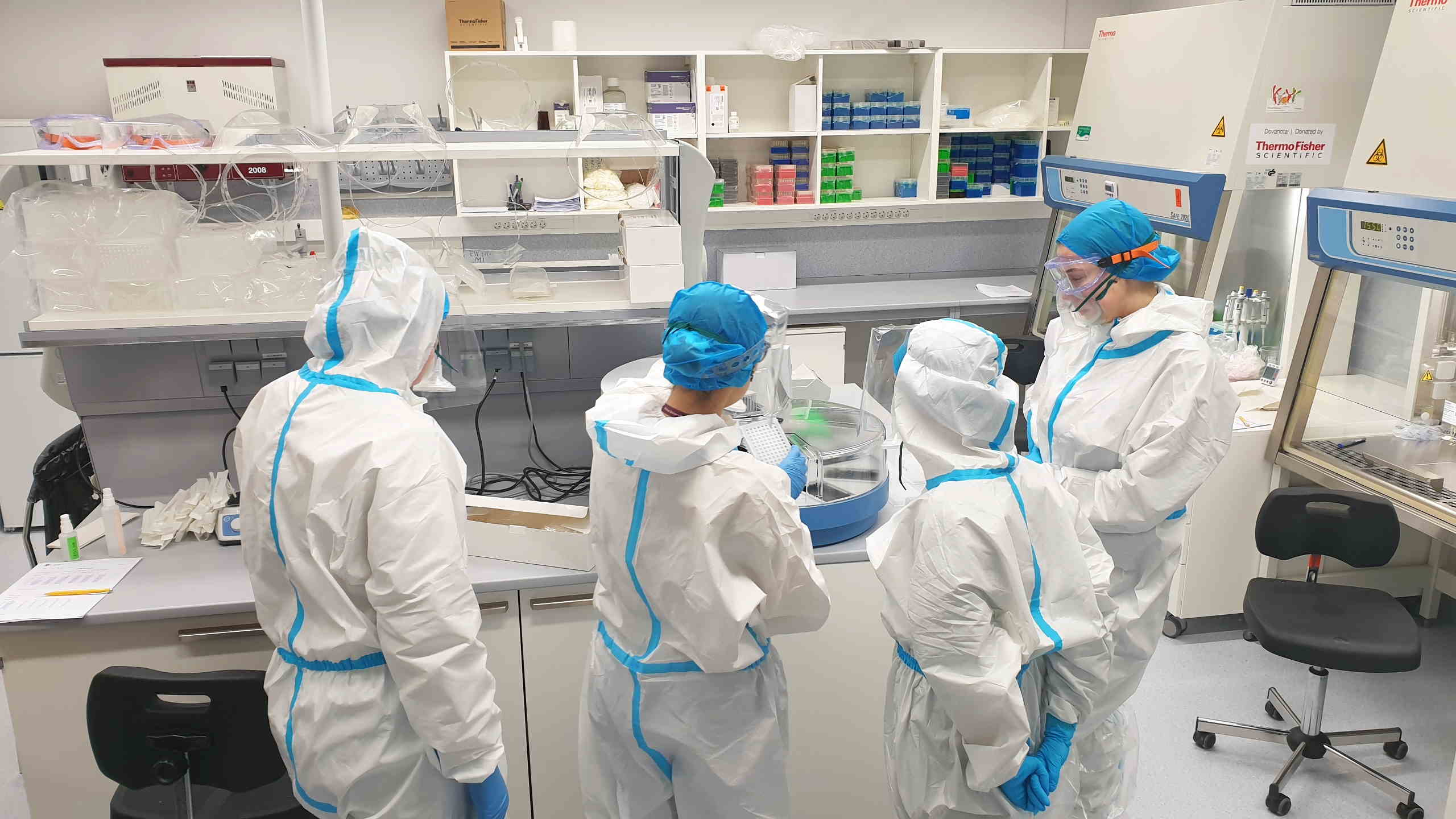|
KRISTINA DANIŪNAITĖ |
|
RESEARCH OVERVIEW
Since the first reported cases of coronavirus disease 2019 (COVID-19), caused by severe acute respiratory syndrome coronavirus 2 (SARS-CoV-2) in China in late 2019, the pandemic has spread rapidly worldwide, which resulted in incapacitated healthcare systems and disrupted socioeconomic activities. Despite stringent control measures (quarantine, social distancing and work from home policies, etc.) deployed by the governments, the high transmission rate of SARS-CoV-2 has led to outbreaks in public gathering places as well as workplaces either due to their poor implementation or limited efficiency. Currently, our group focuses on developing new strategies for SARS-CoV-2 detection and improved diagnostic testing.
RESEARCH ACTIVITIES in 2020
Pooled-sample testing. The emergence of COVID-19 has introduced an acute increase in the diagnostic demand that requires optimization of laboratory workflows. Pooled-sample testing is a promising strategy to screen large populations rapidly with limited resources. Using nasopharyngeal swab samples from a local biobank, we have estimated that the optimal pool size of five samples would allow to significantly reduce the testing costs retaining the diagnostic sensitivity at >86%. As the economic benefit of sample pooling depends on the prevalence in a population, we have estimated that implementation of this pooling strategy would be most effective and would allow to reduce the testing costs as well as time and manpower at least twice if applied to a group of individuals with the expected positivity rate of <6.5%.
Environmental surface testing. One of the reasons why this pandemic has been difficult to contain is the inability to identify presymptomatic and asymptomatic SARS-CoV-2 carriers as some of these individuals can be highly contagious when they have mild or no symptoms. Such individuals can shed a high viral load in their workplace and expose co-workers to constant fomite spread. We assayed over 200 samples of environmental surfaces in the Life Sciences Center of Vilnius University, which led to the identification of several pre-/ asymptomatic carriers among the community. The surfaces tested included door handles of the entrances and corridors, elevators’ keypads, light switches, control panels of appliances, etc. Most of the samples were collected from the offices, which are typically shared by 2–3 employees. Surprisingly, the amount of viral RNA in some of the surface samples was as high as commonly observed in nasopharyngeal swab samples from symptomatic patients. This allowed not only to identify potentially infected individuals but also to estimate the spread of the fomite in the facility. Moreover, trace amounts of viral RNA found in two laboratories were associated with the individuals working there who tested positive roughly a week after the surface samples had been collected. The surface testing has been performed at four other institutions, including one hospital (>250 samples in total), and showed promising results for further validation steps of the methodology.


